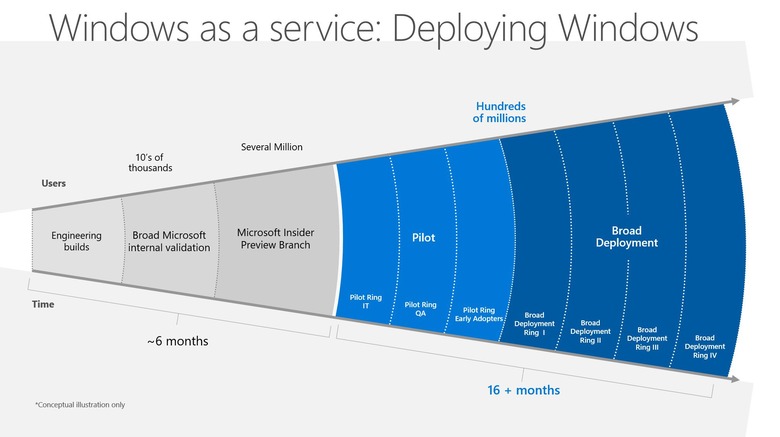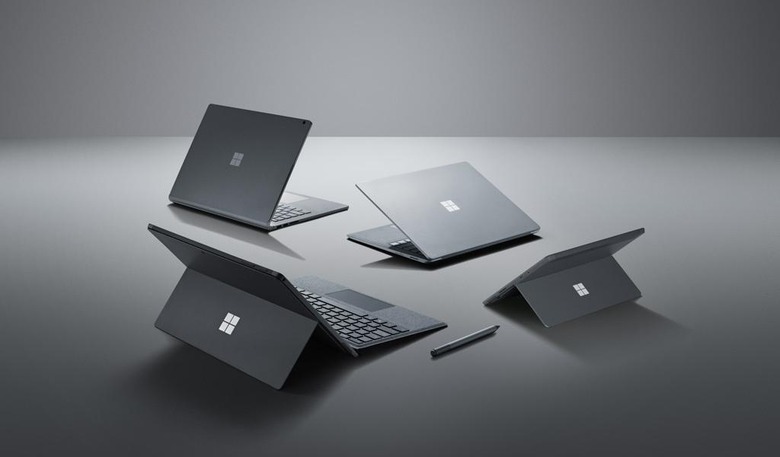What Microsoft Needs To Do To Stop Losing Ground
Once upon a time, when you talked about PC software, you could only think about Microsoft. Unless you were talking about games, in which case you'd still be talking about running them on Windows. These days, however, people and companies have begun asking what a computer is today and their definition doesn't always include "Microsoft", "Windows", or even "Office". In almost all sectors save for two or three, Microsoft has been slowly but surely losing its teeth and its market share. And if it doesn't take swift action, it could very well find itself on the verge of becoming irrelevant once more.
Windows and Office
Microsoft has always been a software company. Of course, it has tried to dabble in hardware, from portable media players to mobile phones but, until the Surface, it has always fallen back to delivering digital products. In practical terms, that means that Microsoft's core products have always been the Windows operating system and the Office productivity suite, be it licensed software or subscription plans.
Lately, however, the dominance of both products have started to slip. While Office does remain the household name in word processing and spreadsheets, the rise of Google Docs, Dropbox, and a new breed of software like Airtable have put dents in Office's user numbers. And let's not even start with how Windows 10 set off to a rocky start and continues to have problematic updates even after four years in the market.

Enterprise and Government
Windows 10's notorious updates have caused headaches for both consumers and, most especially, enterprise customers. The latter actually pay to have some special treatment when it comes to support and stability but are often subjects to the same broken software as any other. While the new "Windows as a Service" paradigm has indeed delivered updates and fixes faster than ever before, it has also delivered bugs faster, something that enterprise users just can't afford.
Despite those quality problems, Microsoft has started raising prices for its software licenses. This has caused many of its large customers to rethink their relationship with Redmond and look to open source alternatives. That's especially true for governments where budget for software is low. Amusingly, Microsoft also revoked CERN's status as an academic institution, causing the world's largest particle physics laboratory to consider alternatives.
Education and Research
The story with another lucrative market segment is a bit different. Microsoft still offers heavy discounts to academic institutions (except CERN) but it is still losing ground in other ways. This is one area where its biggest rivals, Google and Apple, have successfully pushed it down to #3.
Despite the high costs of Apple products, the portability of iPads and especially the growing power of iPad Pros continue to appeal to schools and even some workplaces. On the opposite end of the spectrum, the cheaper hardware of Chromebooks, Chrome OS' fine-grained controls, and Google's pervasive G Suite is a combo very few can resist.

Cloud
Having failed its foray into mobile and sensing the downward slope of its traditional software business models, Microsoft reinvented itself and turned towards everybody's favorite IT buzzword: the cloud. It's not a fully cloud-based company the way Google's main business is the Internet (and Internet ads). It's no Amazon either and while its Azure cloud has plenty of high-profile customers, Google Cloud and AWS still remain the household names in that market.
Surface
Microsoft somewhat hit gold with the Surface. While the first two generations struggled to find their place, the Surface Pro 3 and the parade of Surface-branded computers and accessories that followed turned Microsoft's bad luck with hardware. The Surface tablets definitely received a lot of attention that the iPads finally got some competition, even if it got mistaken for iPads anyway.
And yet it seems that the Surface gravy train is slowing down. Almost like MacBooks, Microsoft seems to be content on going with a proven design and simply iterate over them with internal upgrades year after year. On the one hand, it may suggest the maturity of a product. On the other hand, it also looks like Microsoft has run out of ideas.

A new Microsoft, an agile Microsoft
Microsoft's problem isn't exactly that it makes software that no one uses anymore. Windows remains king of the desktop and Office is still being taught at schools as if it was the only way to use a computer. It has also proven that, if it sets its mind to it, it can actually make great hardware that generates as much loyalty and fanboyism as an Apple device. Microsoft's problem is probably best exemplified by its Windows 10 update track record. It's a large company that is failing to move fast in a fast-moving world.
Its Windows as a service mantra demands that it adopt agile processes and thinking but internal sources suggest it's still applying decades-old mentality on a new system. The PC market has a high turnover rate and sorely needs fresh blood often and no one but Apple seems to be able to sit on the same design for that long. A few highlights in its history proved that Microsoft can change for the better but it seems to be content to sit on its new laurels.
